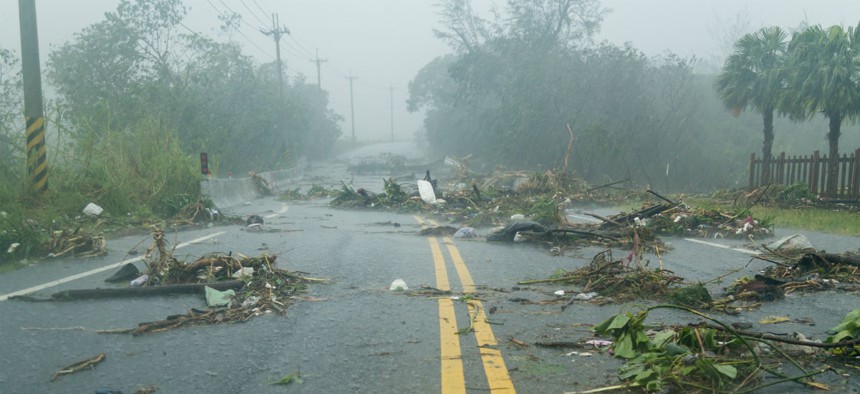Weather Service Employees ‘Shocked’ by Reported Budget Cuts
Lack of say in discretionary spending means layoffs are likely, union says.
This story has been updated with a statement from a National Weather Service spokeswoman.
Reports that the Trump White House budget office plans major cuts at the National Oceanic and Atmospheric Administration have left employees “in the stages of grief, denial and little shocked,” a union leader told Government Executive.
“It’s not a well-thought-through idea, in my opinion,” said Daniel Sobien, president of the National Weather Service Employees Organization. Though he speaks only for the relatively large weather service staff, the cuts discussed in the White House-to-agency “pass-back” documents will affect all of NOAA—“the people who make sure employees get paid, do the hiring and the paperwork, plus the satellite program, which has a direct link to weather forecasting,” he said. NWS is highly dependent on the rest of NOAA, he said.
NOAA overall is reportedly slated for a 17 percent cut, but NWS and the National Marine Fisheries Service would take a hit of just 5 percent. But that is still “hugely devastating,” Sobien said. That’s because the lack of say for managers in reshuffling discretionary spending means that “the only thing they can do is lay people off, so it’s just as bad as a 17 percent cut,” he said.
The Washington Post reported that the Office of Management and Budget outline was targeting research, grant and education programs related to climate change, with NOAA research slated to be trimmed by $126 million and the satellite division by $513 million.
Even under the Obama administration, the weather service was heading for cuts in its weather forecasting staff, according to a July 2016 document released in December by Public Employees for Environmental Responsibility. A Commerce Department deputy secretary and the NWS director were mulling a plan to avoid filling vacancies and downsize its network of 122 local forecasting offices to centralize operations. That would mean a typical office, operating around the clock with a staff of 25, would drop to 3-5 employees working “business hours,” according to PEER’s description.
“The rise in extreme weather events across the country argues for increasing rather than stripping local forecasting capacity,” said PEER Executive Director Jeff Ruch. “How can we be ‘Weather Ready’ if local forecasters work only business hours?”
A National Weather Service spokeswoman refuted PEER's interpretation of the agency's plans in a statement:
"We never considered or proposed to cut National Weather Service staff, close offices, avoid filling vacancies or centralize operations. We are evolving the National Weather Service to better fulfill our mission to protect life and property, and to build a Weather-Ready Nation. As part of this evolution, we have proposed seven changes to leverage technology to achieve consistency across forecast boundaries, break down barriers to enhance forecast collaboration, and to give our forecast staff more time to work closely with their local core partners -- to connect the dots between weather forecasts, impacts, and decisions on the ground to keep the public safe during extreme weather events. The need for this local decision support is growing, and we must evolve to keep pace with increasing demand.
"As we evolve the agency, the public and our core partners will continue to get the excellent forecasts and services they have come to rely on from the National Weather Service."
Sobien has marshaled his union’s arguments for preserving the weather service’s capabilities. NWS forecasting of tornadoes and hurricanes saves lives, he said. Cutbacks will threaten the weather data collected and the models used by the agency as well as private-sector corporations. “Its impact directly will trickle down to the taxpayer and the consumer,” he said, giving the example of alerts to Florida citrus growers near his home. When temperature falls below freezing, “they have to save their crops,” which impacts insurance company payouts, truckers and shippers. “Economically, the cuts are a bad bargain.”
Sobien said NWS has always enjoyed bipartisan support in Congress, “so hopefully we will be able to rally them. They understand that their constituents like the NWS.”
He hasn’t heard of colleagues planning to quit or retire early. “They are used to being a political punching bag,” he said. “They will roll with it and hope they will end up okay at the end.”
Such plans from a new administration “can cause stress and anxiety, and are not good for morale,” Sobien said. “It affects people’s health and marriages. It is not fair. But these are very professional people, and they’re still out there working hard to serve the taxpayer.”
A spokesman for the Commerce Department, the parent agency to NOAA, declined comment on Wednesday.








